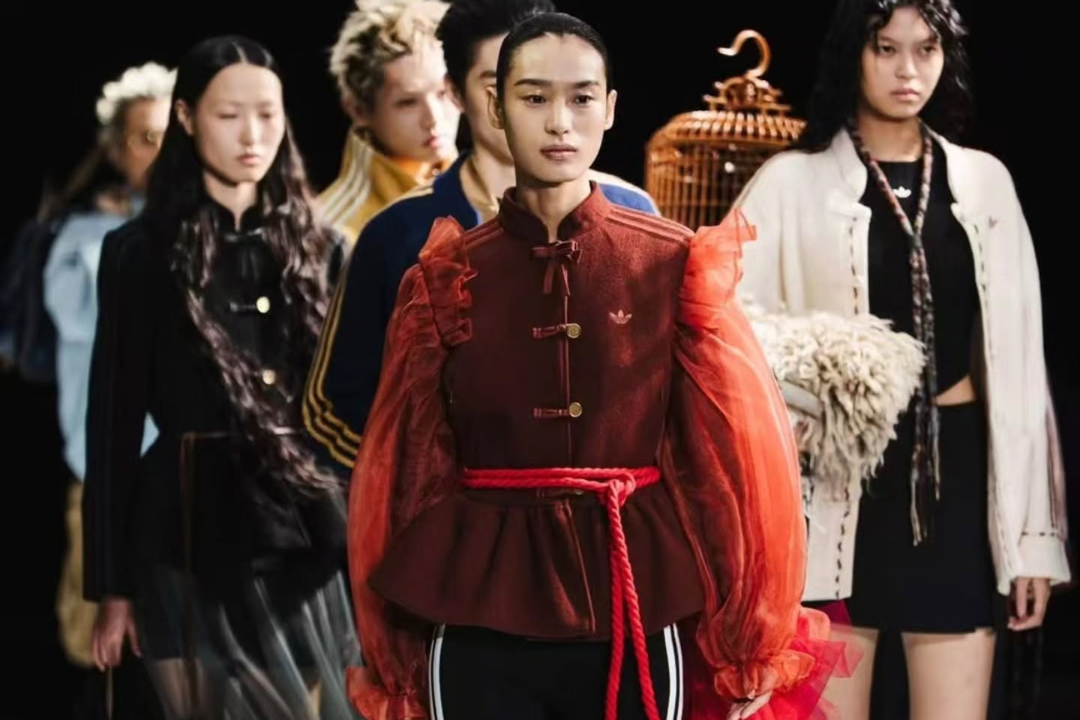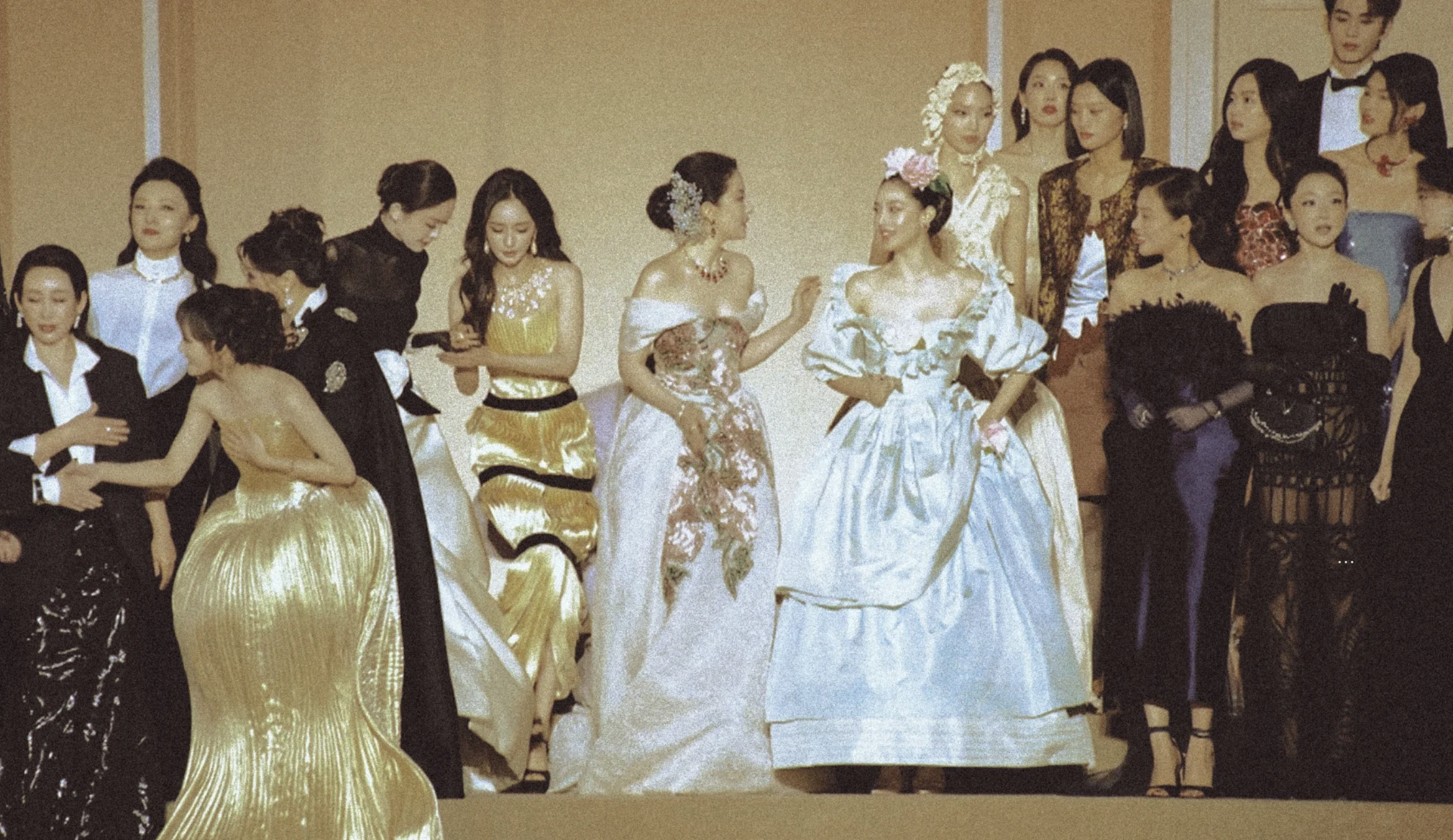China Designers is a biweekly series that showcases the wide spectrum of creativity in Chinese fashion design. From small designers to big brands, these names are changing the connotations of “Made in China,” one collection at a time. Write to us if you have a suggestion or submission.
Before the Met Gala in 2015, Guo Pei had already put in 18 years of work as head of her own couture house. But it was only when Rihanna made a red carpet appearance in her now-iconic 55-pound yellow cape and gown that the Chinese designer became a household name worldwide.
Overnight the garment helped cement Guo Pei as the most internationally-acclaimed Chinese couture designer alive today. In the five years since, she has continued to garner attention with her imaginative fusion of Chinese fine embroidery and traditional motifs with French haute couture — and through her success, elevate the “made in China” label to unprecedented heights.
Perhaps the greatest testament to Guo’s success is her acceptance as a guest member into the extremely exclusive Paris’ Chambre Syndicale de la Haute Couture (in English, Trade Association of High Fashion) — the top regulating commission that determines true haute couture houses. She is the first designer born and raised in China to be awarded this honor, which allows her to show on the same runway as names such as Chanel and Christian Dior during Paris Couture Week. In 2016, Pei was also recognized as one of Time’s 100 most influential people.
Even in her early career, Guo was a consummate pioneer for fashion design in her home country. Just a couple years after China’s opening up — when many in the country remained largely unaware of the term “fashion design” — Guo took a leap into the unknown and graduated as one of the nation’s first cohort of designers from Beijing Second Light Industry School at the tender age of 15. Before founding her own house in 1997, Guo already had a track record of successful brand building for a couple of Chinese premium clothing lines, including Tianma (天马) — one of China’s first privately-owned clothing manufacturers.

Designer Guo Pei
The designer has said that one of her favorite hobbies at the time was to watch people on her daily commute and count how many were wearing her designs. Though China was then on track to become an emerging fashion destination, she recalls feeling the need to spark a bigger conversation about design in her home country.
Enter Rose Studio, a couture house under her own direction. Employing a team of over 300 expert embroiderers, Rose Studio began dressing some of the world’s top celebrities, TV hosts, social elites, and politicians’ wives with its lavish designs out of Beijing. Apart from Rihanna, singers Beyoncé and Lady Gaga, China’s once highest-paid actress Fan Bingbing, and Crouching Tiger, Hidden Dragon star Zhang Ziyi are among some of Guo’s most famous fans.
In addition, Guo’s striking designs have also been featured in some of the most important occasions in her native China, such as the Beijing Olympics closing ceremony, and the Superbowl-equivalent Spring Festival Gala for over a decade. Her designs have also translated into the digital realm, dressing goddess Chang’e in the upcoming Over the Moon animated film for Netflix.
One of the most obvious reasons for her success is her unusual and unparalleled approach to merge Chinese and European design traditions into a single philosophy, as well as her first-rate technical skills. Using dramatic, exaggerated silhouettes and exquisite detailing, Guo’s catwalk shows are not unlike a costume ball that explore the outer limits of her creativity.

Models wearing Guo Pei SS18
Throughout her body of work, Guo frequently draws inspiration from ancient Chinese fairytales, patterns, and traditional paintings. “China has more than 5,000 years of history, even longer culturally-speaking. That history has greatly enriched my designs and is essentially a foundation of my work,” she said in a recent interview with Harper’s Bazaar.
“Elements like phoenixes, dragons, totems about ancestors, or even our memories […] they flow through my designs.”
Guo has evident respect for traditional Chinese embroidery — a long established art form practiced predominately in southern China that requires a high level of craftsmanship. Works usually have nature themes such as flowers, birds and gardens, as well as elaborate geometric patterns, which appear frequently on Guo’s garments as well.
Yet in some collections, especially those which draws more heavily from European tradition, the Chinese touch is far less evident. In her AW19 collection entitled “Alternative Universe,” Guo drew from European influences such as ecclesiastical vestments, voluminous Rococo skirts, Elizabethan ruffs, and Renaissance-era garb.
She similarly paid homage to Romanesque and Gothic architecture a year prior, with structured gowns and delicate detailing that evoked the awe-inspiring verticality of the era’s towering cathedrals.

Models wearing Guo Pei AW18
Aside from drawing “oohs” and “aahs” from crowds and critics, Guo has said that to seek “utmost beauty” is her lifelong mission. “After a couture show, people are thrilled… people tear up,” she told Harper’s Bazaar. “Couture is art and art takes people beyond reality.”
In the Western canon, the designers she admires include Chanel, Valentino, and John Galliano — collectively considered the apex of classic couture. Like Galliano, Guo’s fame hasn’t spared her from controversy either. With her recent SS20 couture collection, netizens accused her of appropriating sacred Tibetan thangka art. According to some Tibetans, using thangka design is considered to be disrespectful and offensive, as it is intended for worship purposes only. Guo has yet to publicly respond over the issue.

Models wearing Guo Pei SS20
At this stage in her lengthy career, however, Guo Pei has had a lot to be thankful for. She reflects fondly on the past, remarking that as a child her grandmother’s bedtime stories were the initial spark that sent her down her chosen career path.
“Every night when I was four or five, [my grandmother] described the dresses that women wore in the old days, and I pictured them before I fell asleep,” she is quoted as saying in the book Guo Pei: Couture Beyond. “She told me about how she used a thread to embroider flowers onto her clothes. Back then, there weren’t photos, but my imagination could run freely.”
Her imagination hasn’t let us down yet, and we eagerly await her next move.
Follow Guo Pei on Instagram.
Header image: Models wearing Guo Pei SS18
All images: courtesy Guo Pei
















